It’s a Lovely Building, For What That’s WadsWorth
Middletown (Google Maps location)
August 4, 2010
My visit to this place came at the end of a full day of traveling around central Connecticut for CTMQ. I had some food stops and a bunch of National Historic Landmark stops down in New Haven, but looking back upon that day, it’s interesting to note that I went to six “museums” that not many people would call museums. The Wadsworth Mansion was the sixth.
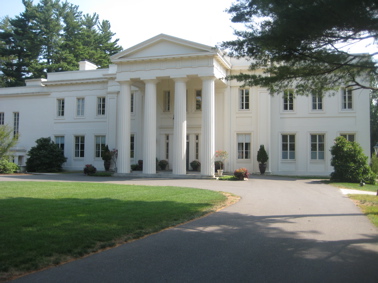
I do remember thinking at the time of putting my day’s itinerary together that this was sort of odd – that I wasn’t going to any museum museums. But then again, I take a perverse pride in this and I think it gives this website its uniqueness.
Now, you very well may be thinking that this place will lead you over to CTMQ pages about the Wadsworth Atheneum, you’d very well be wrong. I’m fairly certain the Wadsworth this place is named after is of no relation to that Wadsworth. But please, don’t think for a second that this Wadsworth isn’t “worth” his “wad” in gold. This guy is responsible for this place, Wadsworth State Park, Wadsworth Falls, the deKoven House, the Rockfall Foundation and a cool sort of outdoor tree museum a short ways away…

Now, I would guess that 99% of those who come to this page are here to poke around about holding your wedding at the mansion. If you are one of those 99% and you are still reading this for some strange reason, I urge you to stick around. Wouldn’t it be cool to be able to talk with your guests about the fascinating history of the mansion and the grounds at which you’re getting married?
Rhetorical question, I know.
Touring the Wadsworth Mansion requires a bit of persistence and, as it turns out, some luck. Your best bet is to visit during one of the Friends of Long Hill Estate events – most notably the one on New Year’s Day. (All this info is available on the website.)
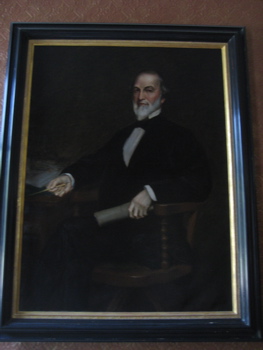
Every Wednesday from 2 to 4, the Wadsworth Mansion is open for tours. Docents from the Friends of Long Hill Estate lead guided tours of the Mansion providing a narrative that details the history of the Estate and the five million dollar renovation. Furniture donated by the Wadsworth Family is on display in the History Room.
On the second Wednesday of every month, the Friends offer up a “Spot of Tea” with the tour which is served in the Mansion’s fabled tradition of hospitality and is offered without charge between 2 and 3.
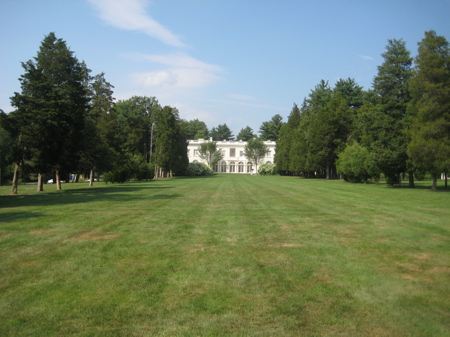
I should note that the surrounding park lands – sort of a museum with a ton of informational signs, is open all the time. So you see, the idea time to visit is on a Wednesday afternoon; not exactly an ideal time for most gainfully employed fathers, but hey man, I do what I’ve gotta do for CTMQ.
I arrived and found the lot more or less empty. Undeterred, I entered the mansion and found some lady packing up for the day with her dog. It was maybe 3:20 but, as is the case with many of these types of places, the volunteer guides sort of make their own rules. I completely understand that attitude, but do get annoyed when it hurts me. It’s not like I have all the Wednesday afternoons I want to flit down to the far reaches of Middletown to check out an old house.
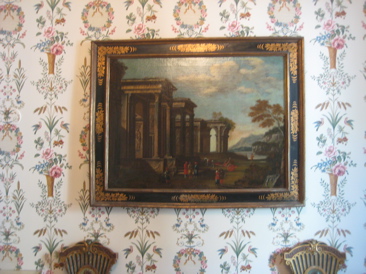
Regardless, I was fortunate to catch this woman on her way out and smart enough to push her to allow me to poke around the mansion. (As it turned out, she was super accommodating and super nice.) She even let me walk upstairs to the floor which is inhabited by some secretive actuarial firm – one which she didn’t tell me their name, nor can I out them via a lazy Google search. Regardless, this would be a rather nice place to work I’d think.
Okay, so what’s this joint all about? First off, it’s beautiful. Stunningly so, actually – and when you read below what happened to it in the 1980’s and 90’s, you won’t believe it. But let’s start back at the beginning. Lots of stuff on this page is from elsewhere.
Clarence Seymour Wadsworth (1871-1941) was the son of Julius and Cornelia deKoven Wadsworth. He lived in New York and Middletown with his wife, and two sons first in the deKoven House and later in the mansion, which he built on his Long Hill Estate between 1909 and 1917. A Harvard-educated lawyer, he became a Colonel in the New York National Guard and a Major in the First Company, Governor’s Foot Guard of Connecticut.
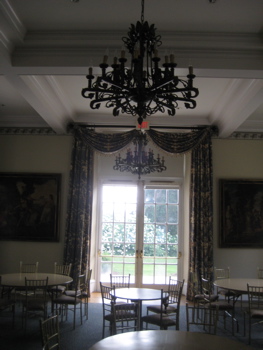
(The deKoven House all the way across Middletown by the Connecticut River is now home to the Rockfall Foundation and several environmental organizations. It’s also part of the wonderful Middletown Heritage Trail, here.)
In 1900 three years after his marriage to Katherine Fearing Hubbard, Colonel Clarence S. Wadsworth began preparing plans for the site of their future country summer residence “Long Hill” in the rolling hills of western Middletown. An authority on the emerging science of forestry and conservation, Colonel Wadsworth had a concern for the environment far ahead of his time. Working with the nationally renowned landscape architectural firm, The Olmsted Brothers, 500 acres of Long Hill were designed in the tradition of a working landscape. They created an estate that evolved from the formal and classical near the Mansion to varied, well-managed forests and pastures.
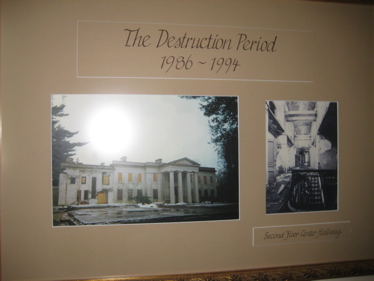
The New York architecture firm of Hoppin and Koen designed the mansion. The firm became known for its country estates, most notably The Mount, Edith Wharton’s 1902 home in Lenox, Massachusetts. For over 30 years, Long Hill was the center of ceremonial life for the Wadsworth and Hubbard families. In 1934 a thousand guests, escorted by the Governor’s Foot Guard, celebrated the wedding of the Wadsworth’s son Julius and his wife Cleome at Long Hill.
Cleome? Cleome.
The Wadsworth Mansion at Long Hill Estate is a 16,000-square-foot classical revival house currently owned by the City of Middletown. From its formal classical nucleus to the naturalized wilderness of its forest, literally every square foot of the Estate was shaped by the ideas of Colonel Clarence S. Wadsworth and his aforementioned architects.
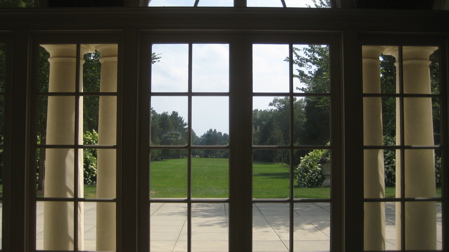
For me, the beauty of the house is all the more stunning because of the surroundings. Starting in 1900, thousands of trees and shrubs were planted to change pastures and orchards into a naturalistic woodland setting around the mansion. Dense nursery plantations were established and mature specimen trees were planted. Some pasturage was left in its natural state and open areas were set aside for a lawn tennis court, the great lawn south of the mansion, and formal gardens.
John Charles Olmsted (the nephew and adopted son of Frederick Law Olmsted) played a major role in the design of the Estate. The full extent of Olmsted’s influence on the final design is not really known, but the firm’s well known approach to landscape is evident.
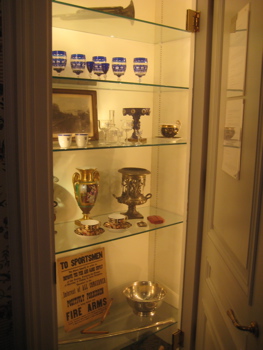
The contract for the house was let to the Dennis O’Brien Construction company, a Middletown firm, at a cost of $90,000.00, a considerable sum even then. The use of reinforced structural concrete and fireproofing, considered a relatively new technology at the time, had rarely been used in residential buildings. Construction of the house began in 1908 and was ‘completed’ around 1911.
The Wadsworth family was in residence at Long Hill in the spring and fall, but maintained homes in New York, Palm Beach, Bar Harbor, Chicago, and Bermuda. Nice.
The Colonel died in 1941, bequeathing the Estate to the Rockfall Corporation, a philanthropic, non-profit organization he established in 1935, devoted to the establishment and preservation of woodlands, wild lands, and open space. In 1942 the Rockfall Foundation honored his wishes by giving 267 acres on the west side of the property to the State of Connecticut to become Wadsworth Falls State Park.
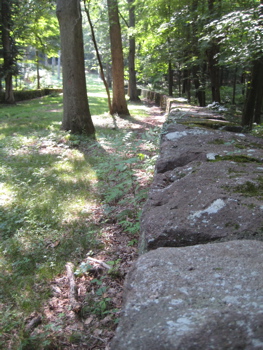
The Wadsworth family maintained Long Hill until 1947, when it was sold to Our Lady of the Cenacle, an order of nuns who used it as a retreat center for 40 years. During that time the house was expanded and the land was subdivided. After being sold to a developer in 1986, the Estate was resold to another developer who planned to subdivide it into housing lots. His plans failed and he filed for bankruptcy in 1988.
And here’s where the Wikipedia entry becomes a little crazy, as they often do.
The bank that repossessed the Estate did not adequately secure the building and it was not long before vandals, satanic worshippers, and homeless people frequented the house.
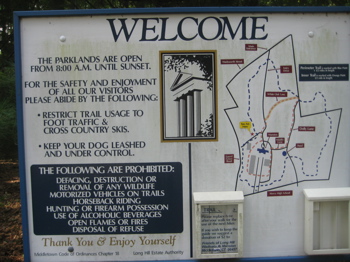
Really? “Satanic worshippers and homeless people?” How did homeless people find their way to this place? And I don’t believe that “satanic worshippers” exist beyond teen lit and papal fantasy. It is certainly true that thieves actually stole the entire copper roof and almost all of the marble in and around the house. Crazy.
Regardless, in 1990 a fire was started in the East Ballroom that nearly destroyed the house. The heat was so intense that the steel used in the west side of the house punctured through the concrete. Had the Colonel not used reinforced concrete the structure would not have survived.
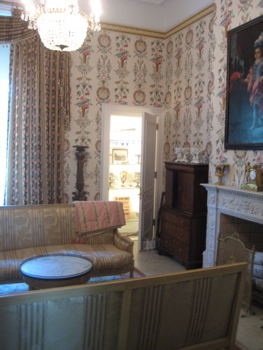
After all this nonsense, the city of Middletown bought the place to restore it, ran over budget (of course) but a town referendum passed to secure the necessary funding and voila, we have a fully restored and exquisite mansion for nerds like me to wander around and others to have weddings.
I have no idea how much inside the mansion is original (though I know it’s not much) but they did do a heroic job of replicating some period pieces and stuff like the crazy trompe l’oeil wallpaper molding.
After the house, I was invited to hike around the grounds on one or both of the interpretive trails. Of course I was excited to do so and happily took the two little booklets – one for each trail. Whoa, these things are super explanatory and offer a wealth of information on the natural history of the area as well as the story behind the Olmstead/Wadsworth partnership. I was very impressed.
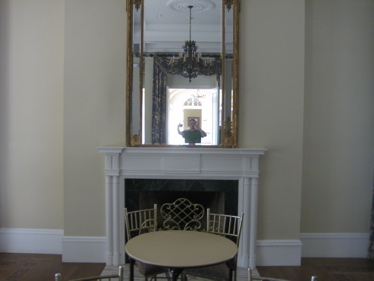
Says their website:
The Parklands at Long Hill Estate are a vast natural resource open for the enjoyment of the community. Along with an unusual assortment of exotic and rare plants and trees, there are several interesting nature trails that highlight the Wadsworth family’s love of the environment. The Parklands are open daily from sunrise through sunset. The 1.5 mile Perimeter Trail and the .5 mile Inner Trail allow exploration of the land. Trail brochures detailing the history of the landscape and the Wadsworth family are available on the trail map signs at the beginning of each trail.
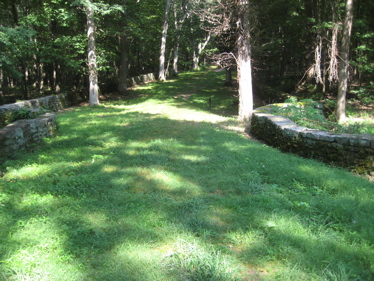
Their site also mentions that in late 2011, the trails are closed due to the recent apocalyptic storms we had here – and I’m sure there was much tree damage here. I walked both trails but along the way, I lost the trail guide for the “Perimeter Trail.” Even without the booklets, each trail has a ton of great and informative signage along the way. In an hour or so of leisurely walking, you can learn a lot of history of the area. It’s very cool.
Wadsworth was sure to have soaring “avenues of trees” that swept up to the house. These “avenues” can be seen today even though the roads are gone. The Inner Ring Trail points out a lot of interesting facts about the house itself and the “lawns” immediately near it. Also, back in Wadsworth’s day, planting exotic species was all the rage. The most exotic one surviving today appears to be an Amur Cork tree from China. The booklet and signs also point out the importance of Wolf Trees and other native species as well. The trail/booklet also contain a geology lesson, even getting as deep as mentioning that the mansion sits atop a drumlin.
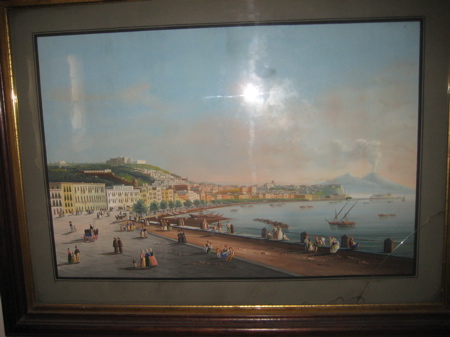
A part of the Inner Circle trail traverses an old (very old!) Indian trail that connected Quinnipiac (New Haven) to Coginchaug (Durham). Another old road area was an old stagecoach roadway and guess who? Yup, Georgie Washington himself noted in his diary that he rumbled along this very road. There are notes about Connecticut’s role in the Revolutionary War along the trail and how a munitions storehouse was here on the property. Signs about local Portland brownstone arches that framed many of the road entrances and how the grass tennis courts came to be. Like how the original pavilion here took the form of a small Greek temple and the nets around the court were upheld by 18 Corinthian columns. There were nets at each end to not only catch the balls, but also to support an arbor of roses. I like that.
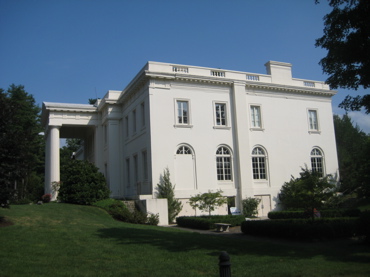
(All that stuff now has been recreated because the original was half stolen, half destroyed by falling trees and weather.)
One interesting feature that holds no appeal to thieves and is resilient, are the stiles built into the stone walls. I’m used to stiles being an ugly feather hastily built in wood to get over a pasture fence. They are all over the place along the Appalachian Trail (even in Connecticut, out in Kent if I remember correctly) and I never thought much of them. But these are built into the walls – and built in such a way that the person going over the wall never has to turn as they are built on an angle. See, look here:
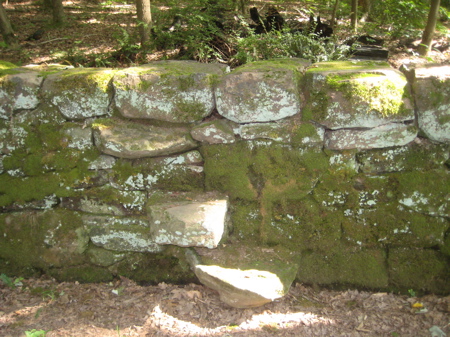
That’s pretty rad. I could go on and on about this place and the trails around it, but I won’t. I’ll leave you with one example of the signs to show how interesting this stuff can be. Just read this, possibly learn something you didn’t already know, and make it a point to visit this place sometime on your own time.
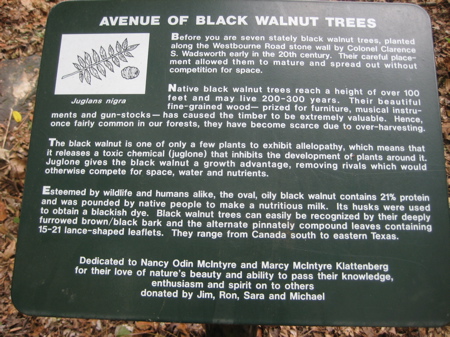
![]()
Wadsworth Mansion
CTMQ’s Middletown Town Trails

Leave a Reply